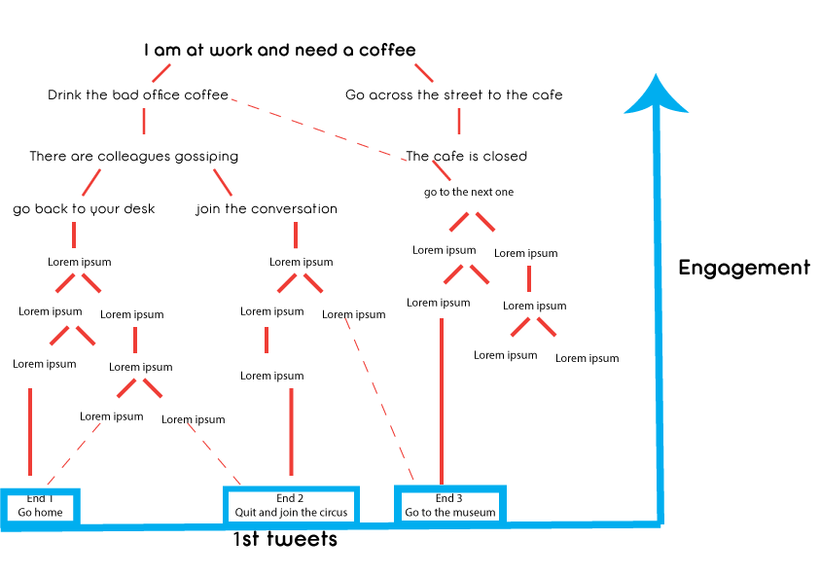Storytelling is a powerful communication tool; cultural heritage comes with its own stories, our stories. The article “7 digital storytelling tips for the cultural heritage sector” includes advice for writing compelling and engaging stories. Instead of writing our piece, we share this article as an addition to our Communication Plan to emphasise the importance of storytelling.
Europeana’s Storytelling Task Force put together these tips that offer simple guidance on the meaning of stories, how you should write them and good practice examples.
If you are just off the boat, storytelling is a communication tool that frames news and content in a narrative and captivating format. Humans are hardwired to respond to stories, so learning how to write good and truthful stories guarantees the audience’s attention.
Local Approach pointers
In this segment, we elaborate on the Content part within our Communication Plan article. Assume that any post is a story aiming to connect with your audience.
Story structure
-Right Pace & Right Time
A post, however well written, has to fit the news context of the time. In cultural heritage, a story can build upon existing segments or conceptually frame events.
-Counterintuitive
Identify stories that are new, captivating and refreshing to the news cycle.
-Real people= Real stories
A regular person’s story is more enjoyable and relatable to the public.
-Be local
( Yes, we are Local Approach, of course, it is local). A local story from a small place is a reflection of a global story through the microscope lens.
-Killer image
An image tells a better story than words ever could. Take strong visuals when working on projects to ensure quality images and essentially visually craft your story. *
-Insightful and factual
Accompany your story with details and data that prove and promote your objective.
-Resharing
Stories are more powerful when they are coming from a third party-your audience- than you.
-Be part of the expert community
Provide your story with an expert or authoritative figure this will give it validity and attract media attention.
These are the key ingredients that can help you get in the storytelling mind-frame next time you post something. Europeana’s tips will surely elevate your communications game. Moreover, improving communication with storytelling impacts the quality of heritage information and education that help us safeguard our culture.
Our takeaways- Storytelling with digital culture webinar!
The webinar expanded on the notions of the article and had presentations from:
“A Picture of Change for a World in Constant Motion (New York Times) links the storytelling text sidebar to a dynamic image gallery that zooms in on Hokusai’s Ejiri in Suruga Province as you scroll, revealing the details at the same time as you are told about them.
Met Kids (Metropolitan Museum of Art, New York) uses illustrations, colours and animation to bring the museum and its collection to life for young visitors.
You Are Flora Seville (Egham Museum) allows people to choose their own adventure as Flora, one of the first 28 students to attend Royal Holloway College for Women. The interactive Twitter thread combines imaginative, relatable events with historical detail to help people respond with empathy.”
We were particularly interested in the Egham Museum’s Twitter thread as an interactive storytelling tool and engaging with the audience by offering them a unique experience. We feel it is a great tool you can add to your communication activity as it is:
✓Gamified
✓Interactive
✓Informative/Educational
✓Making an active connection to the past
✓Evoking emotional response
✓No budget- just time investment
How does it work?
Innovative use of Twitter’s thread function – grouping responses to a tweet- the viewer can choose what to do next by selecting answers (responding threads) and go through the day of Flora. In a nutshell, it has the feel of an ancient computer text-based RPG but on Twitter; with the bonus of being able to share your experience and thoughts as it happens.
How can I do it?
Storyboard// Plan your content
Create a narrative of your non-linear story introducing the character and context. Pose the first question and offer 2 or more options as a response- those will become separate tweet threads. Each of the 2 answers to the original question offers a different path in a similar format.
You can use Twine, an open-source tool, to create your story’s progression and interactions
Check the original Twitter thread for a visual representation.
Or our super basic example:

Reverse engineer and post
Now on Twitter, the way threads are created works in reverse from the way the story progresses. Therefore, with your storyboard/ content map at hand, start your post with the story’s ending(s) and build up the steps until you reach the beginning of the story.
Watch the webinar’s recording for more information about Egham Museum, their process and actions as well as the other wonderful presentations.
Would you be interested to see Local Approach interactive threads?
I want to learn more:
* Taking good images is not as straightforward as it seems, we are planning a series to guide you through the process.
Europeana Storytelling Task Force
List of Digital Storytelling Tools
Webinar resources
Storytelling with digital culture
Our Words, Our Stories: Digital Storytelling with Author Bill Doyle – The met

